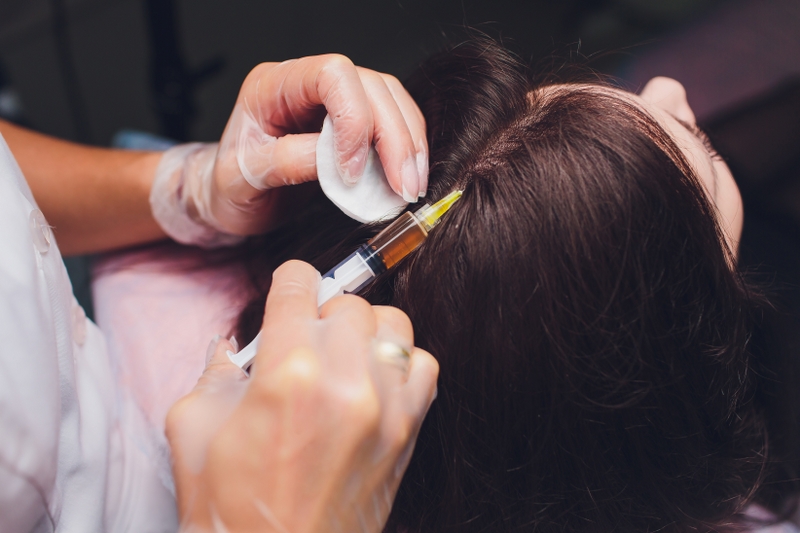 Hair loss is a significant aesthetic concern affecting both men and women in today's age. Various factors, as mentioned below, can trigger hair fall:
Hair loss is a significant aesthetic concern affecting both men and women in today's age. Various factors, as mentioned below, can trigger hair fall:
The PRP (Platelet Rich Plasma) method is an effective and safe procedure we can utilize for various types of hair loss nowadays. It can be employed for androgenic alopecia, also known as male pattern baldness, as well as telogen effluvium. PRP translates to plasma rich in platelets. When our skin gets injured, clotting cells first reach the wounded area and heal it. The fundamental logic behind PRP is to enrich these clotting cells and reapply them to the individual. Blood samples taken from the patient are separated, enriched, and then reinjected to treat skin imperfections.
PRP is a potent solution against hair loss. It's based on the principle of generating rejuvenating cells from the cells present in one's blood. These new cells are reinjected into the body using fine needles. As a contemporary and efficient method in aesthetic treatments, PRP can remedy many skin imperfections. It can be utilized for treating skin issues that people of all ages might have due to age or genetic factors. Hair loss is also a skin problem that can be prevented using PRP.
The primary cells playing a role in PRP treatment are clotting cells or platelets. They are responsible for repairing wounds and damages on our skin. The blood taken from the patient undergoes various processes to be separated and is enriched in terms of platelets before being injected into the flawed area. Platelets use their repairing abilities to heal this region. This method results in strengthened hair and an increase in new hair follicles over time. Once the PRP treatment starts showing its effects, our patients attain a more vigorous and lively hair appearance. Since the injected blood entirely belongs to the patient, the procedure's risk is almost negligible. Post-operation, there might be slight edema and bruises at the injection site. These can be prevented with prescribed medications and typically fade within 2-3 days.
The PRP procedure, including anesthesia and application, takes about 40 minutes in total. It's performed with fine-tipped needles, so it's preferred to be done under local anesthesia. Initially, a blood sample is taken from the patient and placed in specialized tubes. It's separated in a centrifuge device and enriched in terms of platelets. The obtained blood is then reinjected into the patient's scalp area. After the procedure, the patient can immediately return to their daily life. However, for the treatment to be effective, it's necessary to repeat the process in regular intervals, at least 3-4 times.